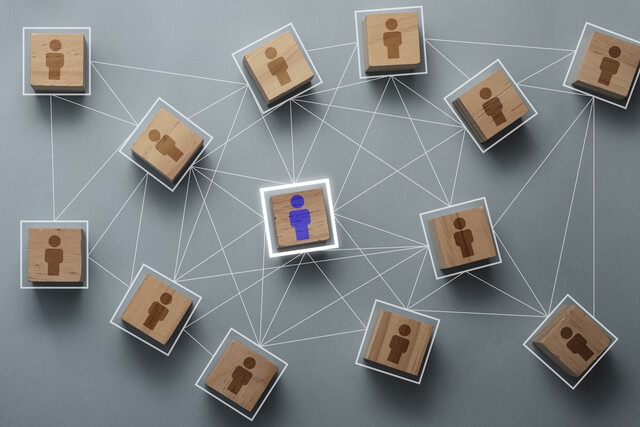INTRODUCTION
When a consultant refers to organizational development, the definition that applies can be a study of successful organizational performance and change. This can refer to any number of organizations and organization types including for profit and non-profit organizations.
Consultants can instruct organizations on how workers can be effectively motivated within an organization. This can include culture and the values members have within a group. It can also refer to how an organization identifies and solves problems.
Consultants can advise and provide information on how development within an organization is ongoing. Consultants can also provide information on how to change and evolve organizations to improve them. Some of the areas where you can provide information includes organizational psychology and how to motivate individuals within organizations.
Areas consultants can address include problems with:
-
Leadership
-
Communication
-
Problem solving
-
Status and structure
If an organization is struggling or just looking to improve a consultant can provide information about how to improve in these areas. A consultant can point out to an organization it is important to remind management that:
-
People want to do interesting work
-
People want to develop to their full potential
-
People want to be treated as human beings and not just part of process
-
People want to cooperate
-
Trust among employees is important
-
Solving problems is important to the effectiveness of an organization
-
Managing conflict is important to the effectiveness of an organization
Consultants can also be effective and help an organization if they remind management that good organizational development means people:
-
align with an organization's vision
-
solve problems effectively
-
participate in planning processes
-
enjoy their work
HELPING WITH CHANGE
If the leadership in an organization wants to improve or solve a problem related to organizational development, a consultant can help. Change will be part of the approach as with change comes improvement and solving of problems.
As management decides to seek help in making changes, the consultant can step in by helping management to look at the whole organization and how change could help. The whole organization includes:
Leadership
Management
Workforce
Departments and work groups
Individuals
The consultant also looks at these elements in the context of the values of the organization. This includes:
Organizational culture
Groups within the culture
Individuals within the groups
The function of the consultant in helping groups to change to improve is to improve:
Processes within groups
Interpersonal relations
Communication
Problem solving
Decision making
Trust
Cooperation
Typically, a consultant will help an organization to better foster self managed groups. Ideally, within these group members:
-
support each other
-
do good work
-
monitor the progress of their work
-
manage functions such a recruiting
-
assist with effectively training new employees
-
take responsibility for their work
-
feel accountable
-
communicate about problems
-
take corrective action as needed
-
ask for help when needed
-
raise productivity
THEORY, ORGANIZATIONAL DEVELOPMENT, AND CONSULTANTS
The consultant can help an organization by explaining theories of organizational development and how to apply them. In general the term Organizational Development refers to the theory and practice of how people achieve success in organizational performance and change. The consultant can point out that organizational development involves continuous evaluation, planning, diagnosis, and implementation. Good organizational development can mean good problem solving and change that improves an organization.
How did organizational development as an application get started? A consultant could remind their clients that organizational development started when in the 1930's studies showed that an organizational structure can influence the motivation and behavior of a worker.
Organizational climate refers to an organization as having a personality. The climate that leadership provides includes attitude and practices that create a climate influencing the way individuals and groups in the organization behave. This can influence employee:
-
stress
-
satisfaction
-
service quality
-
attitudes toward change and new programs
Some of the organizational development strategies a consultant can use involve how to make change for improvement. It includes diagnosis, action planning, intervention, and evaluation.
Diagnosis involves identifying problems. Here a consultant can help an organization identify what is making a group ineffective. The consultant can also help identify root causes for problems. Here you can look at factors such as policies, procedures, missions, goals, objectives, structures, technologies, climate, culture, and decision making to make and implement change. You can develop surveys and conduct interviews to get data about these elements.
Action planning involves looking at interventions. These interventions are strategic and are meant to address diagnosed problems. Here the consultant can work with leadership to look at an action planning process. The process looks at how practical different strategies are to lead to action. Intervention involves the process of change. Here the action is specific and progress is monitored. You also look at getting stakeholder commitment.
Evaluation involves looking at how effective were the efforts to make change for the better. You track the progress in implementing change. You also document the impact on the organization.
The consultant can point out that interventions can have a focus on:
-
Tasks – what people do
-
Processes – how people get tasks done
Interventions can also depend on which of these helps determine the change:
-
communication
-
conflict
-
education
-
norms
-
feedback
The consultant should point out that change occurs best in a safe climate. Learning and change must not threaten an individual. Ideally, the climate creates a safe environment for continuous change and improvement. In an environment that is not conducive to learning and change an individual feels threatened and may not be able to learn anything new. Trying out a new process could violate norms and values. The status quo is the safest way to go.
Experimentation could be feared. To make sure there is no such fear, the consultant can point out that the goals should be these.
1. Management should make clear their support of change.
2. Management should make clear their ability to listen.
3. Management should make clear change is needed.
4. All involved parties should recognize the human desire to learn.
HOW TO GUIDE – ON ORGANIZATIONAL DEVELOPMENT
Here are guideline consultants can use on how to help an organization. Consultants should get answers to these kinds of questions.
-
Do the members of the organization know the mission of the organization?
-
Do the members of the organization support the mission of the organization?
-
Is work within the organization organized effectively?
-
Does the organization reward members of groups?
-
Does the organization punish members of groups?
-
Is leadership trusted?
-
Does the organization help members in a group with their planning functions?
-
Does the organization help members in a group with budgeting?
Once the consultant gets answers to these questions, the consultant can help leadership form plans to address problems.
Thus begins the change in the organization as plans form and execution of the plans proceeds. The consultant can help with developing these plans and their implementation.
The next phase involves results. This is where the organization changes. If an organization does not, for example, reward employees who support the mission of a group, it can plan to start rewarding employees. Once employees are rewarded, results should improve.
Consultants can help develop data to show this. In the case of rewards, the consultant could set up the metric, collect the data, and look at improvement. Once rewards begin, productivity should improve. If it does not, consultants can point this out and look at the root cause.
Here are more steps consultants can use in this how to approach to improve organizational development.
1. Collect data through surveys and questionnaires.
2. Interview individuals to assess culture.
3. Conduct group discussions and team building exercise.
4. Work to change groups more than individuals.
5. Determine inappropriate competition between groups.
6. Determine ways to keep communication open.
7. Determine ways to raise levels of trust at all levels.
8. Keep people involved in improving the processes they know best.
A CHECKLIST TO CONSIDER
When a consultant provides input on organizational development, a checklist can help. Here are some guidelines on questions to ask to develop the checklist.
Organizational structure
1. Does the organization have vision statement?
2. Does the organization have mission statement?
3. Does the organization communication vision and mission statements?
4. Do employees know the mission and vision statement?
Objectives
1. Does the organization document objectives and goals?
2. Do objectives and goals support the organization's mission and vision?
3. Do all groups have goals and objectives?
4. Do all groups follow their goals and objectives?
5. Do individuals within groups know their goals and objectives?
Policies and procedures
1. Are policies documented?
2. Are procedures documented?
3. Are policies and procedures followed?
4. What values does leadership have?
5. Are leadership values shared?
6. What is the culture of the organization?
7. Is behavior rewarded and recognized?
8. Does the organization value commitment?
9. Does the organization value innovation?
10. Does the organization value teamwork?
Training and development
1. Does the organization value training and development?
2. How does the organization help individuals maintain skills?
3. How does the organization help individuals develop skills?
4. Is innovation valued in the organization?
5. Is cross training available?
6. Is coaching available?
7. Is mentoring available?
Resources
1. Do individuals have the resources they need to perform properly?
2. Do individuals have the hardware the need?
3. Do individuals have the software they need?
4. Do individuals have the IT support they need?
5. Do individuals have an adequate work space?
6. Is the work space healthy?
7. Does the work space facilitate work flow?
Structures
1. Are job descriptions available?
2. Are job descriptions up to date?
3. Are job descriptions followed?
4. Are reporting structures documented?
5. Could work efficiency be improved?
6. Could processed be improved?
7. Do people provide feedback on improvement?
8. Is communication about job performance adequate?
9. Are procedures documented?
10. Are procedures available?
PERFORMANCE REVIEWS
A consultant can help an organization as the organization looks at its performance reviews. Here is a checklist of typical areas to measure.
Adaptability
Attendance
Communication
Cooperation
Dependability
Initiative
Job knowledge
Organizational support
Planning
Problem solving
Productivity
Punctuality
Quality
Values
In an area such as organizational support you could make sure an organization evaluates these kinds of activities.
- Respects diversity
- Supports diversity
- Follows policies
- Follow procedures
- Supports organizational goals
- Supports department goals
In an area such a quality, here are items to consider evaluating.
- Demonstrates accuracy
- Promotes quality
- Provides feedback on improvements
LET'S LOOK AT ONE APPROACH FOR CONSULTANTS
In some organizations the use of consultants is typical with regard to organizational development. These consultants routinely help organization reach goals and solve problems pLus learn about new problem solving skills to help solve future problems.
These consultants can offer a range of services to include:
-
Business process improvement
-
Change management
-
Customized training
-
Meeting facilitation
-
Problem solving within groups
-
Talent management
-
Team development
Business process improvement can involve a redesign of the way work is done. This can include a factory work flow as one example. You look at how work gets done and how to improve the overall process.
Change management involves working with groups on projects such as a move or reorganizing a department or solving problems.
Meeting facilitation involves how to plan an agenda and use time and resources effectively.
Talent management involves working with managers to make sure the right person is in the right role with the right skills.
CONCLUSION AND SUMMARY
We have now looked at issues regarding organizational development and the consultant.
We looked at how a consultant can help with change, a theory overview, performance, a check list you can use, and more how to guidance.






























